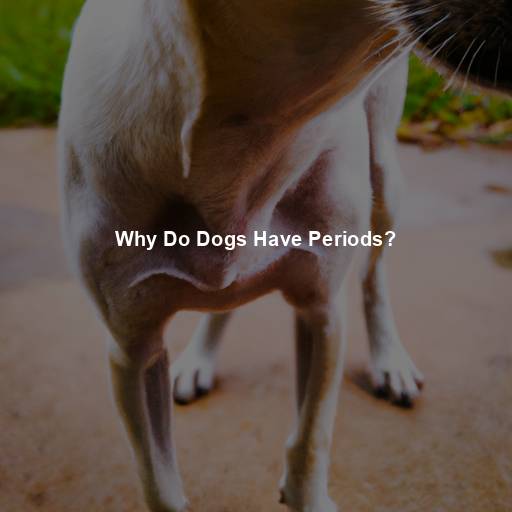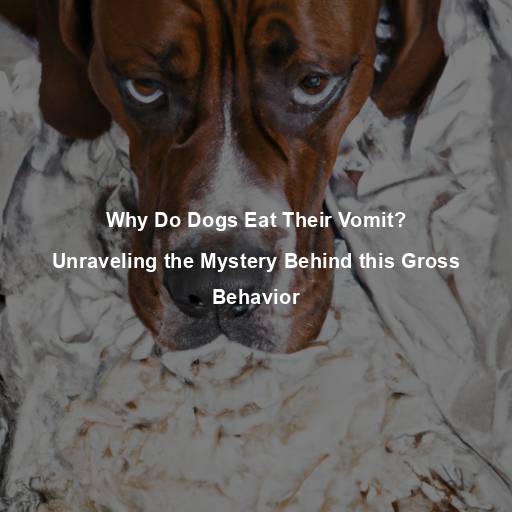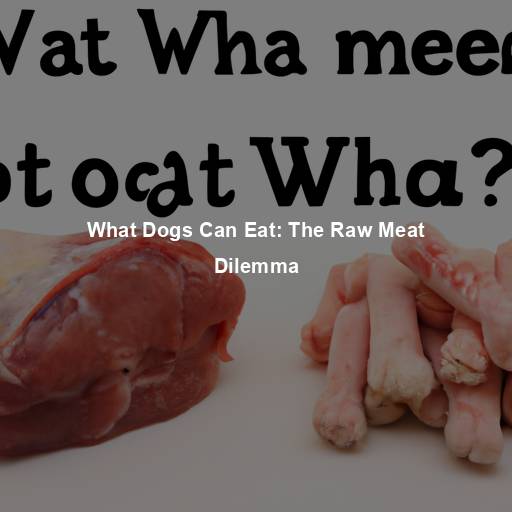Why Do Dogs Have Periods?
Last Updated on November 12, 2023 by Evan
Contents
- 1 Understanding the Canine Menstrual Cycle
- 2 The Influence of Breed and Individual Factors
- 3 The Role of Spaying: A Choice for Pet Owners
- 4 Providing Care and Support During the Estrous Cycle
- 5 Celebrating the Canine Reproductive System
- 6 FAQs – Why do dogs have periods?
- 6.1 Q: Do all dogs have periods?
- 6.2 Q: What is a dog’s period?
- 6.3 Q: How often do dogs have periods?
- 6.4 Q: How long do dog periods last?
- 6.5 Q: Why do female dogs bleed during their periods?
- 6.6 Q: Can dogs get pregnant during their periods?
- 6.7 Q: Are there any health concerns during a dog’s period?
- 6.8 Q: Can dogs’ periods be controlled or prevented?
- 6.9 Q: Can dogs go through menopause like humans?
- 6.10 Q: Are there any home remedies to manage a dog’s period?
Understanding the Canine Menstrual Cycle
As pet owners, we often come across various aspects of our furry companions’ lives that pique our curiosity. One such topic that may have crossed your mind is why dogs have periods. Just like humans, female dogs experience a reproductive cycle that includes a period of menstruation. In this article, we will delve into the details of the canine menstrual cycle, exploring its purpose, duration, and potential health concerns.
The Estrous Cycle: A Tale of Hormonal Changes
In female dogs, the reproductive cycle is known as the estrous cycle, commonly referred to as the “heat” cycle. This cycle is regulated by hormonal changes that prepare the dog’s body for potential pregnancy. Unlike humans who have a monthly menstrual cycle, dogs experience estrus, or heat, approximately every six to twelve months, depending on the breed and individual factors.
The Phases of the Estrous Cycle
The estrous cycle consists of four main phases: proestrus, estrus, diestrus, and anestrus. Each phase plays a crucial role in the reproductive process, and understanding these stages can shed light on why dogs have periods.
In the thrilling proestrus stage, lasting roughly nine days, a female dog’s body undergoes a mesmerizing transformation, gearing up for the possibility of mating. A stunning dance of hormonal fluctuations orchestrates the swelling of her reproductive organs, while her behavior takes on a mysterious allure. She may find herself irresistibly drawn to engaging in frequent urination and captivating male dogs with her enigmatic charm.
Experience the enigmatic phase of your canine companion: Estrus. This captivating time, also referred to as the “active heat” period, usually lasts around nine days, but it can dazzle with its own unique rhythm. As your beloved furry friend enters this mysterious phase, be prepared for a range of physical and behavioral transformations. From a swollen vulva to a delicate yet vibrant bloody discharge, your canine companion may also reveal an intriguing interest in male dogs.
Diving into the intricate world of a dog’s reproductive cycle, we encounter the enigmatic diestrus phase. After the captivating estrus stage, diestrus takes the spotlight, lasting around two months, leaving us captivated by its unwavering duration. Whether or not the furry goddess conceives, pregnancy unfolds during this perplexing phase, yet the tale takes a twist if fertilization fails, as the dog’s enigmatic body undergoes mysterious transformations, preparing for the thrilling encore of the next estrous cycle.
- Anestrus: The anestrus phase is a period of reproductive inactivity that follows diestrus. It is a resting phase during which the dog’s reproductive system undergoes a period of recovery and regeneration. The duration of anestrus can vary significantly, ranging from several weeks to several months.
Shedding Light on the Purpose
As we delve into the fascinating realm of the estrous cycle, an enigmatic inquiry emerges: what is the rationale behind dogs experiencing periods? Tracing back to the very heart of nature’s intricate design, we uncover a crucial purpose – the perpetuation of species via reproduction. In the canine realm, the enigmatic and rhythmic estrous cycle stands as a testament to the potential for unions that keep the honorable lineage of our loyal companions alive and thriving.
During the estrus phase, female dogs release pheromones and display behavioral changes that attract male dogs. This serves as a mechanism to facilitate reproduction by increasing the chances of successful mating. The bloody discharge observed during this period is an indication of the dog’s fertility, signaling to potential mates that she is ready to conceive.
Health Considerations and Care
As a dog owner, it is imperative to stay informed about the natural cycles that your furry friend goes through. The estrous cycle, a normal occurrence in female dogs, demands our attention when it comes to their well-being. It’s crucial to be mindful of any potential health issues that may arise during this perplexing period and offer the necessary care to ensure their continued vitality. So, buckle up and dive into the complexities of your dog‘s reproductive journey!
- Spaying: Many dog owners choose to spay their female dogs to prevent unwanted pregnancies and eliminate the need to manage the estrous cycle. Spaying involves the surgical removal of the reproductive organs and can be done before or after the first heat cycle.
Ensuring the well-being of our canine companions demands our utmost vigilance, particularly when it comes to the intricate dance of their heat cycle. The estrus phase, in particular, requires us to maintain an unblinking gaze upon our female dogs, for it is during this fleeting period that their fertility peaks. Safeguarding their sanctity calls for mindful measures, such as keeping them sheltered indoors or nestled within the confines of a secure fence, effectively thwarting any untoward mating or potential health hazards.
When it comes to female dogs in heat, maintaining hygiene can be quite a challenge. The bloody discharge that accompanies this phase can leave unsightly stains on your furniture and bedding. However, fret not! By setting up a designated area with surfaces that are easy to clean and utilizing doggy diapers or pads, you can ensure that hygiene remains a top priority during this perplexing time.
When it comes to your furry friend’s reproductive health, it’s always wise to seek the guidance of a trusted veterinarian. Whether you’re noticing peculiar symptoms or simply have concerns, they’re equipped to conduct thorough examinations and address any health issues that may arise. With their expertise, you can navigate the complexities of your dog‘s reproductive system with confidence and ensure their well-being. So don’t hesitate to reach out and give your four-legged companion the care they deserve!
Progesterone: The Hormone of Pregnancy
One of the primary hormones involved in the estrous cycle is progesterone. This hormone plays a crucial role in preparing the female dog’s body for potential pregnancy and maintaining gestation if fertilization occurs. During the diestrus phase, progesterone levels rise and remain elevated, indicating that the dog’s body is preparing for pregnancy.
Estrogen: Driving the Changes
Estrogen is another hormone that plays a vital role in the estrous cycle. It is responsible for initiating the physical and behavioral changes associated with the proestrus and estrus phases. As estrogen levels increase, the female dog’s reproductive organs undergo changes, including vulvar swelling and increased blood flow to the uterus.
The Absence of Menstruation
When it comes to the delicate topic of female reproductive cycles, our furry companions take a completely different approach than us humans. Unlike the monthly shedding of the uterine lining that we experience, dogs have their own perplexing twist. During the estrus phase, hormonal shifts cause blood vessels in their thickened uterine lining to burst, resulting in what’s known as “vaginal bleeding”. This unexpected and rather puzzling discharge not only catches our attention but also serves as a visible sign of a dog’s fertility.
The Influence of Breed and Individual Factors
Every dog breed and individual pooch has its own peculiarities when it comes to the frequency and duration of their estrous cycle. Although a typical estrous cycle takes about three weeks, it’s important to keep in mind that some breeds may deviate from this norm, either with shorter or longer cycles. Other elements that can throw a wrench into the regularity of a dog’s estrous cycle include age, overall health, and hormonal imbalances. It’s quite a mixed bag, really!
Small Breeds vs. Large Breeds
When it comes to our canine companions, it’s fascinating how size can really make a difference. Take a closer look at their cycles, and you’ll be flabbergasted by the disparity between small and large breeds. While pint-sized pooches like Chihuahuas sashay through heat cycles twice a year, their towering counterparts like Great Danes saunter through just one annual episode. The secret behind this curious contrast lies in the intricate workings of their hormones and the complexity of their reproductive systems.
The Impact of Age and Reproductive Maturity
The timing of a female dog’s reproductive maturity can bring about bursts of perplexing variations in her estrous cycles. As nature’s whims dictate, smaller breeds often quicken the pace and mature earlier than their larger counterparts. For some petite pups, the enigmatic dance of their first heat cycle may commence as early as six months of age, while their bigger brethren might patiently wait until they are one to two years old, filled with uncertainty.
Hormonal Imbalances and Health Concerns
In some cases, hormonal imbalances or underlying health issues can disrupt the normal functioning of a dog’s reproductive system. Conditions such as ovarian cysts, uterine infections (pyometra), or hormonal disorders may lead to irregular or absent estrous cycles. If you notice any abnormal changes or suspect a health concern, it is essential to consult with a veterinarian for proper diagnosis and treatment.
The Role of Spaying: A Choice for Pet Owners
One cannot deny the prevalence of spaying, a surgical intervention that dismantles a female canine’s reproductive capabilities. This widely adopted procedure carries with it an array of advantages, imparting a sense of control over unintended litters, diminishing the likelihood of specific reproductive ailments, and nullifying the necessity to navigate the intricacies of the estrous cycle.
The Timing of Spaying
Spaying can be performed before or after a female dog’s first heat cycle. Some veterinarians recommend early spaying, usually around six months of age, to prevent the onset of heat cycles and potential complications associated with reproduction. However, the timing of spaying can vary depending on the individual dog and the veterinarian’s recommendations.
Considerations for Spaying
When it comes to the decision of spaying your beloved pooch, it’s vital to navigate through a labyrinth of factors. From your furry friend’s breed to their age, overall health, and even your own plans for future breeding, there are many perplexing elements to ponder. While spaying can bring forth a plethora of benefits, it’s a decision that requires deep contemplation and expert guidance from a trusted veterinarian. So, take a deep breath, embrace the burstiness of choices before you, and make the decision that feels right for both you and your furry companion.
Providing Care and Support During the Estrous Cycle
As devoted caretakers of our furry friends, it is of utmost importance to bestow upon our female canine companions the necessary care and support during their mystifying estrous cycle. With that in mind, here are some invaluable pointers to safeguard their overall well-being and happiness:
Environment and Exercise
During the estrus phase, female dogs may experience increased restlessness and a desire to escape. It is essential to ensure a secure environment and prevent unintended mating by keeping them indoors or in securely fenced areas. Additionally, providing regular exercise can help alleviate anxiety and restlessness during this time.
Hygiene and Comfort
Maintaining cleanliness and hygiene during your furry friend’s estrous cycle is crucial for a spotless abode and a happy hound. Opting for doggy diapers or pads is a savvy choice, as they skillfully contain any signs of bloody discharge, guaranteeing that your furniture and bedding stay untarnished. Additionally, diligently tending to their sensitive genital area with gentle and pet-safe hygiene products not only ensures immaculateness, but also serves as a safeguard against any potential pesky infections.
Monitoring and Observation
Keeping a close eye on your female dog during her estrous cycle is essential. Monitor her behavior, physical changes, and any signs of discomfort or distress. If you notice any abnormalities, such as excessive bleeding, lethargy, or loss of appetite, it is crucial to consult with a veterinarian promptly.
Consulting a Veterinarian
As a conscientious dog owner, it’s important to prioritize your furry friend’s reproductive health through regular veterinary check-ups. By seeking guidance and examinations from a trusted veterinarian, you can navigate the complex world of doggie reproductive well-being with ease. These experts are equipped to address any concerns you may have, discussing various spaying options and offering personalized advice tailored to your unique canine companion. Rest assured, with their expertise, you’ll be well-prepared to ensure your dog’s reproductive journey is one of health and happiness.
Celebrating the Canine Reproductive System
After much contemplation, it has become glaringly evident that the estrous cycle and the occurrence of periods in our beloved furry canines are simply a part of their innate reproductive system. Delving deeper into the intricacies of hormonal regulation, the influence of specific breeds and individual variances, the impact of spaying, and the crucial role of providing optimal care during these cycles, we unlock a perplexing realm of knowledge that sheds light on the overall reproductive well-being of our cherished companions. Let us take a moment to marvel at the wonders of nature and bask in the enigmatic connection we share with our canine counterparts as we embark on an awe-inspiring journey into the fascinating world of dogs and their reproductive cycles.
Stay tuned for more fascinating insights into the world of pets, only on PetsRoof.com: Your Go-To Source for All Things Pets!
FAQs – Why do dogs have periods?
Q: Do all dogs have periods?
A: No, not all dogs have periods. Only female dogs, or those that are not spayed, experience menstruation. Male dogs do not have periods.
Q: What is a dog’s period?
A: A dog’s period, technically known as estrus cycle or heat cycle, is a recurring reproductive process that prepares a female dog for potential pregnancy. It involves hormonal changes and the release of eggs from the ovaries.
Q: How often do dogs have periods?
Every dog is as unique as a snowflake, which is why the frequency of their periods can be a mind-boggling mystery. From once-in-a-blue-moon to a rhythmic dance of hormones, female dogs can experience the crimson tide anywhere from as often as every few months to a scarce annual visit. Nature keeps us on our toes, leaving dog owners pondering the ever-changing patterns of canine biology.
Q: How long do dog periods last?
A: A dog’s period typically lasts for about 2-3 weeks. During this time, the female dog may experience different stages, including proestrus (bleeding), estrus (receptive to mating), and diestrus.
Q: Why do female dogs bleed during their periods?
In the intricate world of canine physiology, a mysterious phenomenon unravels itself through the enigmatic process of uterine shedding. Just like the human counterpart, the gracious dog experiences a mesmerizing period of bleeding, signifying a cyclical dance of possibilities in the realm of potential pregnancy. This perplexing occurrence brings forth a glimpse into the intricate tapestry of nature’s design, leaving us marveling at the intricacies of our furry friends’ reproductive journeys.
Q: Can dogs get pregnant during their periods?
A: Yes, dogs can get pregnant during their periods. In fact, the estrus phase of a dog’s period is when she is considered fertile and capable of becoming pregnant if she mates with a male dog.
Q: Are there any health concerns during a dog’s period?
A: While a dog’s period is a natural and normal part of their reproductive cycle, there can be certain health concerns associated with it. Some female dogs may experience mood changes, increased urination, or swollen vulva. If you notice any concerning symptoms, it is recommended to consult with a veterinarian.
Q: Can dogs’ periods be controlled or prevented?
B: It’s a swirling whirlwind of doggy debate – can man’s best friend dodge the crimson tide? The answer lies in the puzzling realm of spaying, a perplexing surgical procedure that bids adieu to uterus and ovaries. This tantalizing tactic not only prevents unplanned puppy parties, but also curtails hormonal havoc and safeguards against dreaded reproductive maladies in our furry companions. It’s a controversial choice, but one that barks volumes for responsible pet parenting.
Q: Can dogs go through menopause like humans?
Contrary to popular belief, our furry friends, dogs, do not experience the same phenomenon as human menopause. As female dogs advance in age, their fertility may gradually decline, but their reproductive ability does not suddenly come to a screeching halt as it does for women. It’s fascinating how nature differs between species, isn’t it? So, no need to worry about Fido going through the “dog version” of menopause, they’ll continue to be their lovable selves for years to come.
Q: Are there any home remedies to manage a dog’s period?
A: It is generally advisable to consult with a veterinarian regarding any concerns related to a dog’s period. While there may be some home remedies or over-the-counter products that claim to manage a dog’s period, it is important to be cautious as these may not be safe or effective. Veterinarians can provide appropriate guidance and recommend suitable options for managing a dog’s period if necessary.







